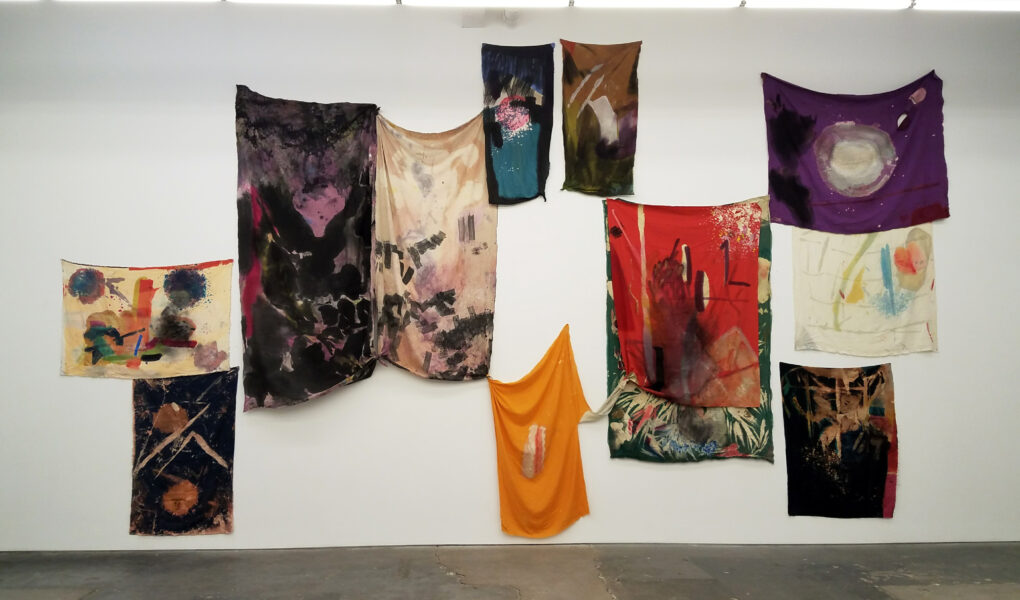by Meagan Atiyeh
Kristan Kennedy’s color-field paintings are worked and washed in a repetitive process. A small number of marks, additive or reductive in ink, bleach, or other mediums, often graphically punctuate their foregrounds. Her formats vary from discrete paintings, stretched and framed, to installations in which the raw painted, stained, and dyed canvases fill large walls (fig. 1) and drape over substructures. These are not two distinct bodies of work so much as two poles, serving, as in a magnet, to frustrate and energize each other. At one pole, Kennedy emphasizes composition, soliciting from the viewer the conventional act of looking at an art-historical object—the painting itself. At the other, she uses her canvas to infer a bodily form, marking its faint edges and rendering it evocative through obscuration and innuendo.
Originally commissioned for the Visual Arts Project by The Ford Family Foundation CRITICAL CONVERSATIONS program element, and edited by Sue Taylor, Professor Emerita of Art History, Portland State University, this essay also appeared in FIGURING, an annual arts journal (shifting title as it progresses) of the same program. Critical Conversations is led by the University of Oregon with partners Portland State University, The Cooley Gallery, Reed College; and PNCA at Willamette University.
The inaugural publication is dedicated to notions of “figuring,” that is, the processing of a moment to inform a position from which to act, the presentation of a form, or expression of a body. By holding space for both indeterminacy and latent form, Figuring conjures histories and possible futures, lived experiences, and propositions for ways that ethereal matter might exist concretely or be allowed to endure as defined by its own logic.
The inaugural publication is dedicated to notions of “figuring,” that is, the processing of a moment to inform a position from which to act, the presentation of a form, or expression of a body. By holding space for both indeterminacy and latent form, Figuring conjures histories and possible futures, lived experiences, and propositions for ways that ethereal matter might exist concretely or be allowed to endure as defined by its own logic.
